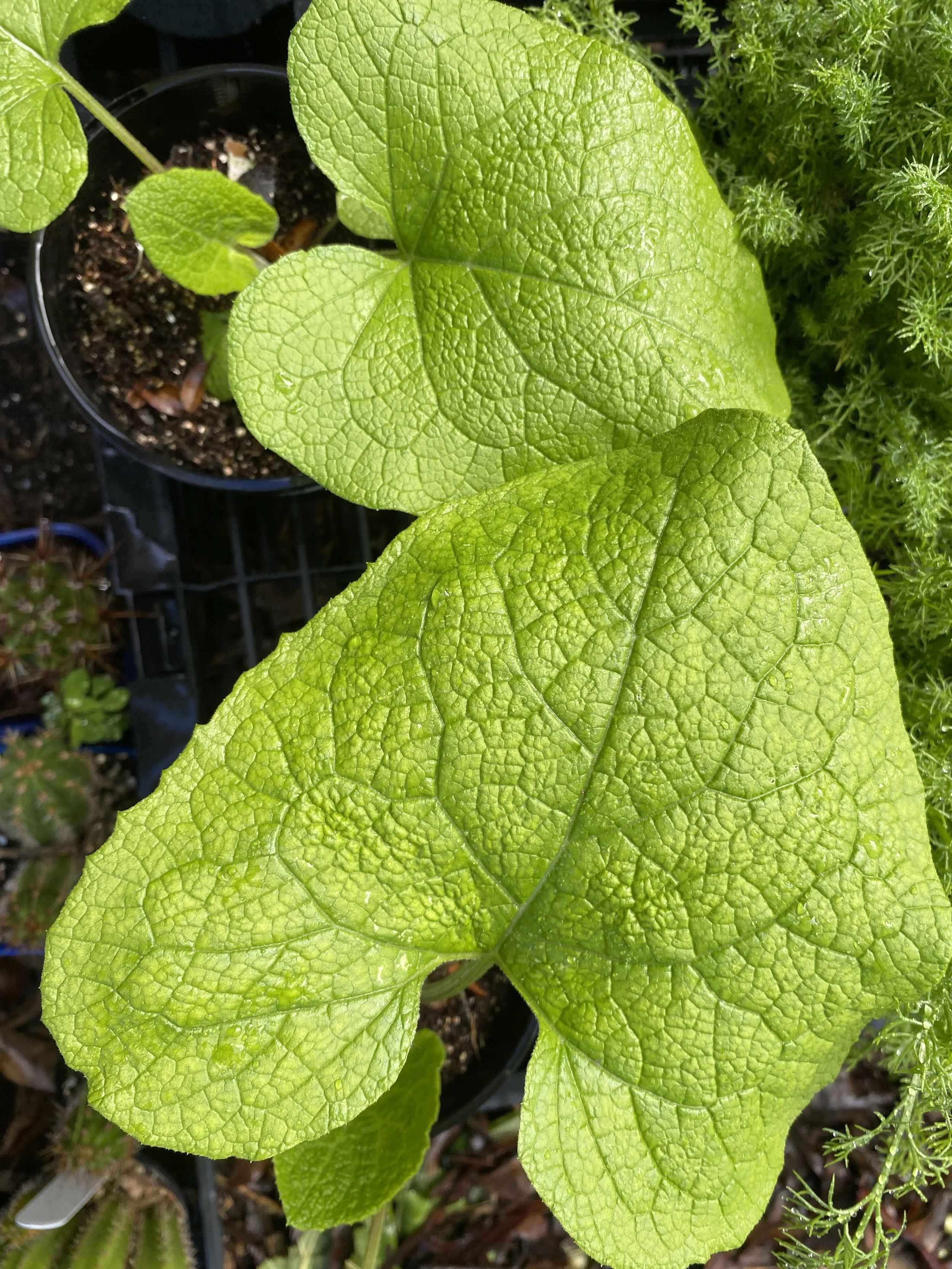Borage Plant
Plant Availability: Spring to Summer
Pot Size: 1L
Benefits:
Borage is known for its attractive blue flowers, edible leaves with a mild cucumber flavor, and its ability to attract pollinators like bees to the garden.
Growing Conditions:
Borage thrives in the spring and summer months. It is an annual plant that grows well in warm weather.
Soil: Well-draining soil enriched with organic matter is preferred. Borage is not too picky about soil types but does well in moderately fertile soil.
Watering: Keep the soil consistently moist but not waterlogged. Borage is somewhat drought-tolerant once established.
Position: Plant borage in a sunny location for optimal growth. It can tolerate partial shade but performs best in full sun.
Fertilizing: Minimal fertilization is needed for borage. Lightly Compost
Use: Borage is a versatile herb. Both its leaves and flowers are edible and can be used in salads, drinks, or as a garnish. It's also a beneficial companion plant in the garden, enhancing the growth of nearby plants.
Growing tips:
Prune regularly to encourage bushier growth.
Deadhead flowers to prolong blooming.
Allow some plants to self-seed for a continuous supply.
Watch out for pests like aphids; borage is known to deter them from other plants in the garden.
Harvest leaves and flowers when they are young for the best flavor.
Plant Availability: Spring to Summer
Pot Size: 1L
Benefits:
Borage is known for its attractive blue flowers, edible leaves with a mild cucumber flavor, and its ability to attract pollinators like bees to the garden.
Growing Conditions:
Borage thrives in the spring and summer months. It is an annual plant that grows well in warm weather.
Soil: Well-draining soil enriched with organic matter is preferred. Borage is not too picky about soil types but does well in moderately fertile soil.
Watering: Keep the soil consistently moist but not waterlogged. Borage is somewhat drought-tolerant once established.
Position: Plant borage in a sunny location for optimal growth. It can tolerate partial shade but performs best in full sun.
Fertilizing: Minimal fertilization is needed for borage. Lightly Compost
Use: Borage is a versatile herb. Both its leaves and flowers are edible and can be used in salads, drinks, or as a garnish. It's also a beneficial companion plant in the garden, enhancing the growth of nearby plants.
Growing tips:
Prune regularly to encourage bushier growth.
Deadhead flowers to prolong blooming.
Allow some plants to self-seed for a continuous supply.
Watch out for pests like aphids; borage is known to deter them from other plants in the garden.
Harvest leaves and flowers when they are young for the best flavor.
Plant Availability: Spring to Summer
Pot Size: 1L
Benefits:
Borage is known for its attractive blue flowers, edible leaves with a mild cucumber flavor, and its ability to attract pollinators like bees to the garden.
Growing Conditions:
Borage thrives in the spring and summer months. It is an annual plant that grows well in warm weather.
Soil: Well-draining soil enriched with organic matter is preferred. Borage is not too picky about soil types but does well in moderately fertile soil.
Watering: Keep the soil consistently moist but not waterlogged. Borage is somewhat drought-tolerant once established.
Position: Plant borage in a sunny location for optimal growth. It can tolerate partial shade but performs best in full sun.
Fertilizing: Minimal fertilization is needed for borage. Lightly Compost
Use: Borage is a versatile herb. Both its leaves and flowers are edible and can be used in salads, drinks, or as a garnish. It's also a beneficial companion plant in the garden, enhancing the growth of nearby plants.
Growing tips:
Prune regularly to encourage bushier growth.
Deadhead flowers to prolong blooming.
Allow some plants to self-seed for a continuous supply.
Watch out for pests like aphids; borage is known to deter them from other plants in the garden.
Harvest leaves and flowers when they are young for the best flavor.










